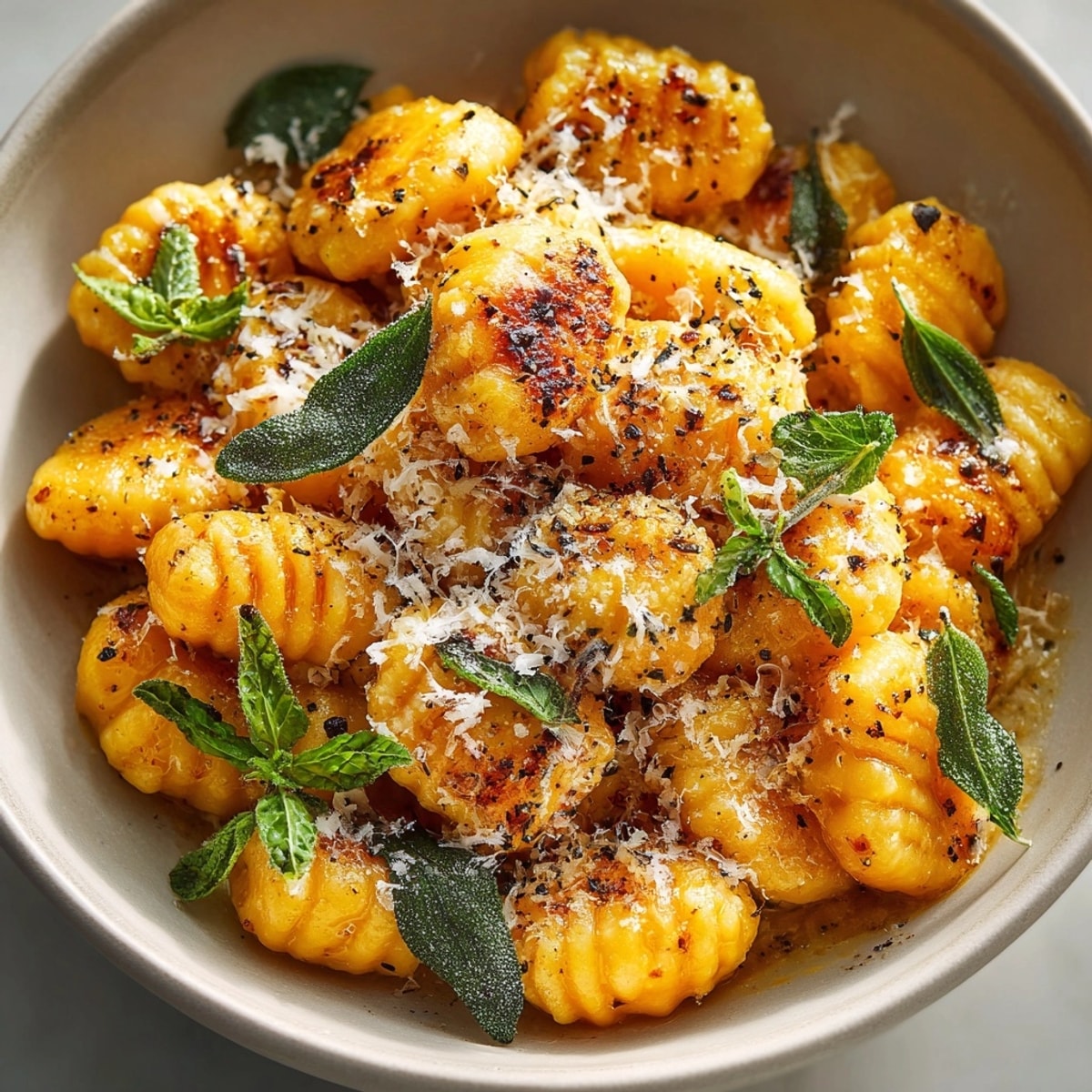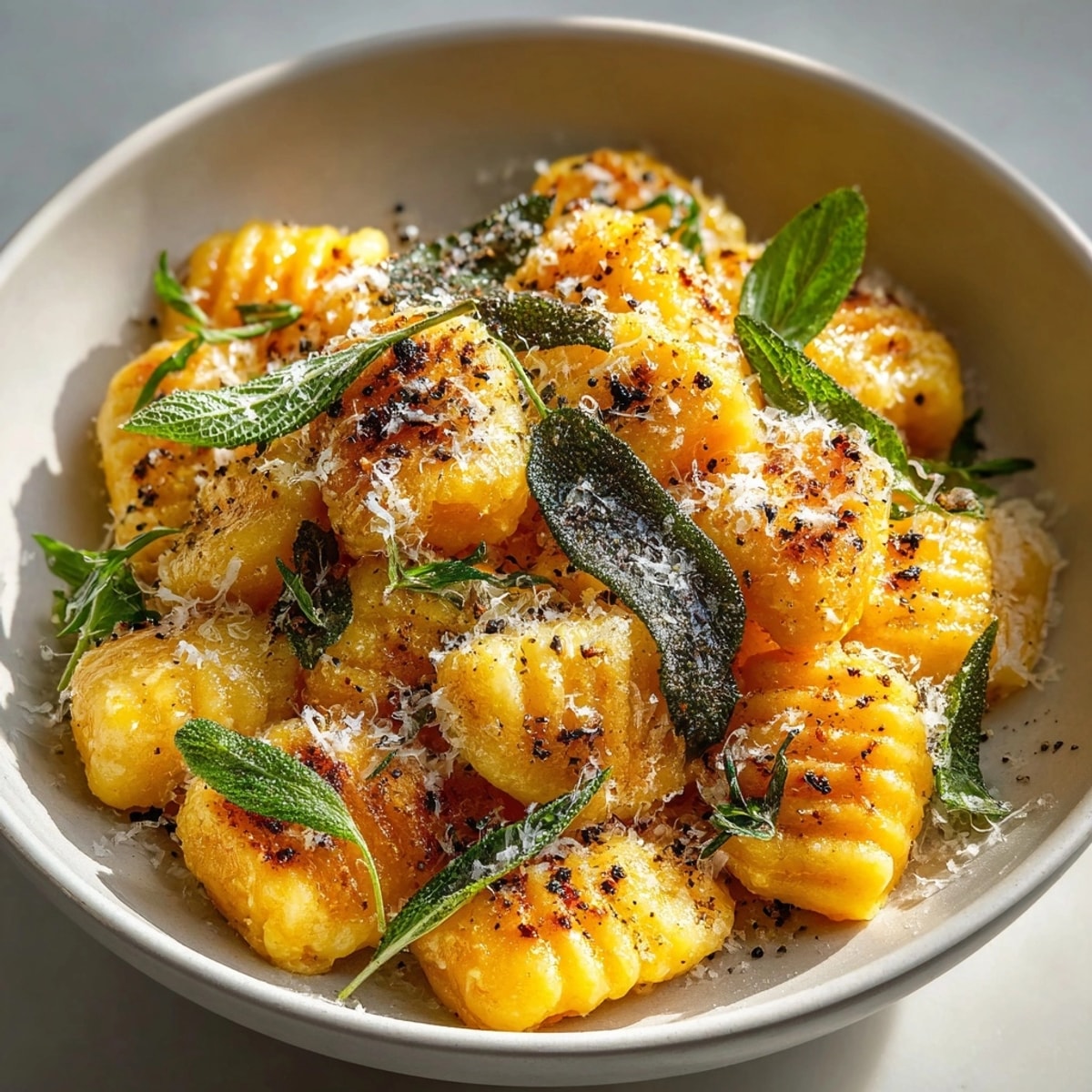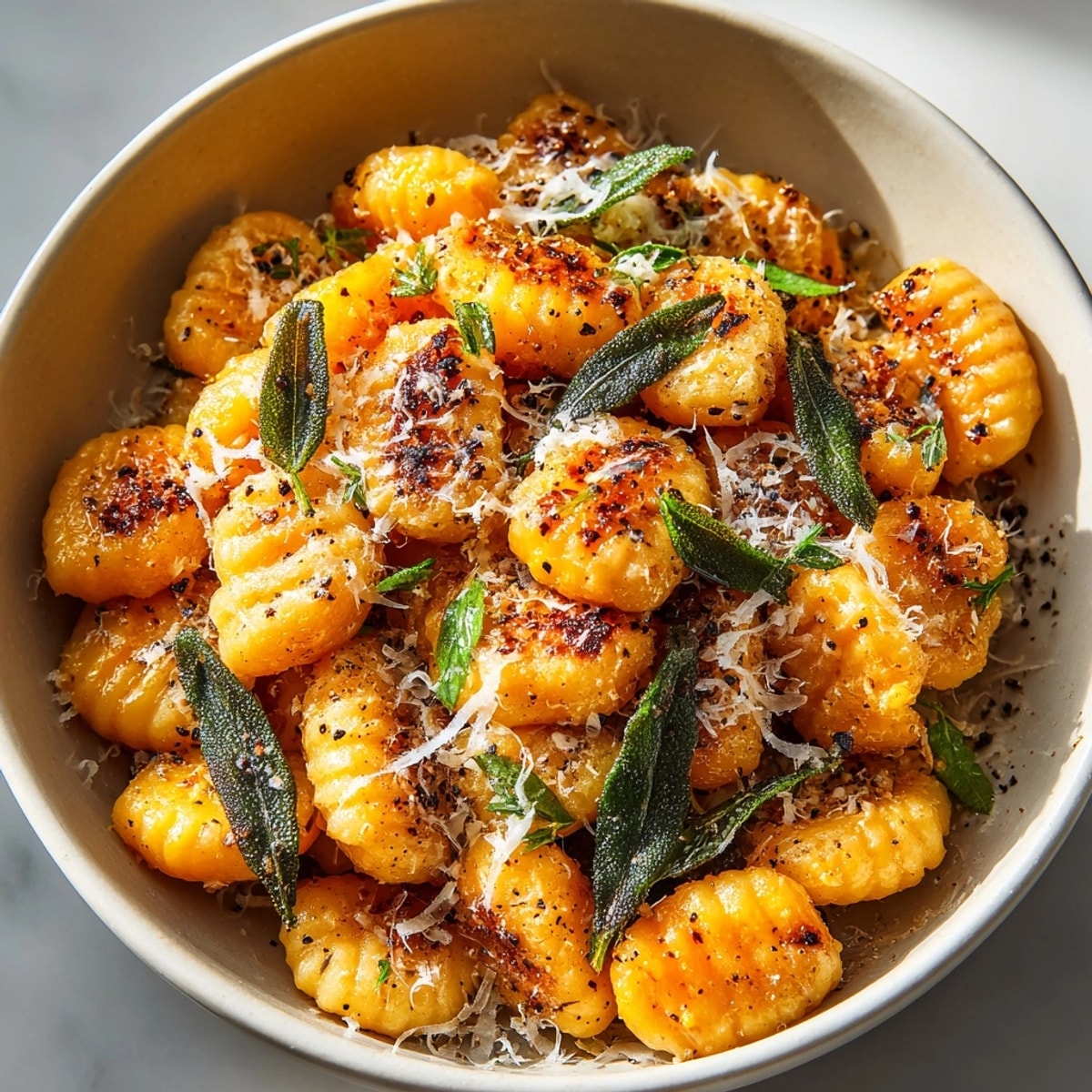 Pin
Pin Sweet potato gnocchi is a simple weeknight meal that brings both comfort and a pop of color to your table. With only a handful of ingredients, you can create light, subtly sweet dumplings that feel special enough for a cozy family gathering or an impressive vegetarian main.
Since my first attempt at sweet potato gnocchi, this dish has become a touchstone in our family. Whenever the air gets chilly, I find myself craving the warm, caramel notes that the roasted sweet potatoes lend to each bite.
Ingredients
- Sweet potatoes: choose firm unblemished potatoes for the best flavor and brightest color
- All-purpose flour: measure loosely and add only as much as needed for dough that is soft but workable
- Large egg: fresh eggs help bind the gnocchi for a more tender texture
- Fine sea salt: elevates the potatoes natural sweetness and keeps the dough balanced
- Unsalted butter: for rich browning of the finished gnocchi
- Fresh sage leaves: these add savory warmth and fragrance during the sauté step
- Freshly grated Parmesan cheese: for a salty nutty finish try Parmigiano-Reggiano for the best flavor
- Black pepper: for a little bite and brightness at the end
Instructions
- Roast the Sweet Potatoes:
- Preheat your oven to 400°F or 200°C. Pierce each sweet potato a few times with a fork. Arrange on a baking sheet and roast until completely soft which may take about 40 to 50 minutes depending on size. Let them cool just enough to handle easily. This slow cooking caramelizes their sugars for maximum sweetness.
- Mash and Cool:
- Peel the sweet potatoes once they are cool enough to handle. Use a potato masher or fork to mash the flesh in a spacious bowl until there are no lumps. Let the mash steam for a few minutes so some moisture evaporates. Dryer mash means lighter gnocchi.
- Make the Dough:
- Add a beaten egg and sprinkle in the salt. Stir well. Gradually fold in the flour using your hands or a fork. You want the dough to come together but not be stiff. The trick is to stop adding flour as soon as the dough is only just workable. Too much flour makes gnocchi gummy.
- Shape the Gnocchi:
- Lightly flour your counter and turn out the dough. Divide it into four pieces. Gently roll each piece into a log about as thick as your finger. Cut these logs into bite-size pieces about three quarters of an inch long. If you want the classic look, press each dumpling gently against the tines of a fork or a gnocchi board to create ridges.
- Boil the Gnocchi:
- Bring a big pot of salted water to a rolling boil. Drop in the gnocchi in batches. Wait until they rise to the surface usually about two or three minutes. Use a slotted spoon to lift them out and let them drain.
- Brown in Butter:
- Melt butter in a large skillet over medium heat. If using sage, toss in the leaves and let them sizzle until fragrant and crisp. Add the cooked gnocchi. Let them sit undisturbed for a minute to brown then gently toss until they are golden.
- Serve with Parmesan:
- Mound the gnocchi onto plates. Shower with plenty of Parmesan and finish with a crack of fresh black pepper. Eat right away for the best pillowy texture.
 Pin
Pin Sage is my absolute favorite part here one taste and I flash back to my grandmother sprinkling crispy leaves over freshly made gnocchi for Sunday lunch. There is just something about that combination of browned butter and sweet potatoes that is pure comfort food at its best.
Storage Tips
Store leftovers in an airtight container in the fridge for up to three days. Reheat gently in a skillet with a touch more butter. To freeze lay uncooked gnocchi on a baking sheet and freeze until solid then transfer to a freezer bag. They can be cooked straight from frozen add a minute or two to the boiling step.
Ingredient Substitutions
For gluten free use a cup for cup gluten free flour blend instead of all purpose. Omit the egg for an egg free version but the gnocchi may be slightly denser. For a dairy free finish use olive oil in place of butter and skip the Parmesan or use a plant based alternative.
Serving Suggestions
These gnocchi are perfect with a simple brown butter and sage sauce but you can try a drizzle of garlic infused olive oil or a dollop of ricotta on top. Sometimes I toss in wilted baby spinach and roasted walnuts for a bit of crunch.
Cultural and Historical Context
Gnocchi has roots in various regions of Italy where it is prized both as a hearty winter meal and a simple peasant dish. Sweet potato versions are a more modern twist but capture the same homey spirit that Italian grandmothers have cherished for generations.
Seasonal Adaptations
Swap in pumpkin or butternut squash for the sweet potato base Try rosemary or thyme instead of sage in summer Serve with a bright tomato sauce when fresh tomatoes are in season
Success Stories
I have made this for friends who doubted homemade gnocchi could ever be worth the effort now it is their go to Saturday project with the kids. First timers quickly realize the pleasure of shaping each dumpling by hand and everyone always comes back for seconds.
Freezer Meal Conversion
Double the batch and freeze half before boiling for a quick comforting meal whenever you need it. On busy days I just drop the frozen gnocchi into boiling water and finish with butter in the skillet for a no stress dinner.
 Pin
Pin This gnocchi turns any chilly evening into a warm celebration. Gather your favorite people and serve up gentle comfort in every bite.
Recipe Q&A
- → What texture should sweet potato gnocchi have?
It should be soft, pillowy, and tender, with a light bite—avoid dense or gummy dough for best results.
- → Can I prepare the gnocchi dough ahead of time?
Yes, the formed dough can be refrigerated for a few hours. Cook freshly for optimal texture and flavor.
- → What’s the best way to serve sweet potato gnocchi?
Sauté in golden butter with sage and garnish with freshly grated Parmesan and black pepper for classic Italian flair.
- → How can I make this dish dairy-free?
Replace butter with olive oil and omit Parmesan for a delicious dairy-free option without compromising flavor.
- → Is it necessary to add ridges to the gnocchi pieces?
Not required, but rolling over a fork adds texture and helps sauces cling better; plain pieces work well, too.